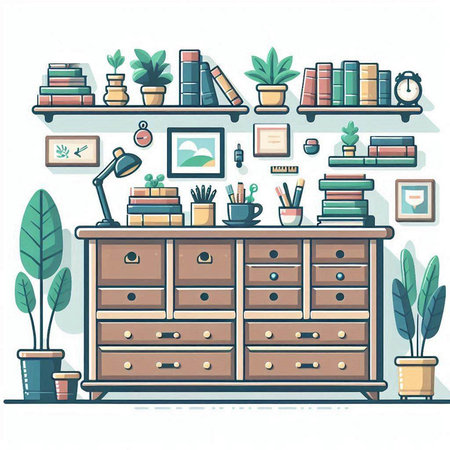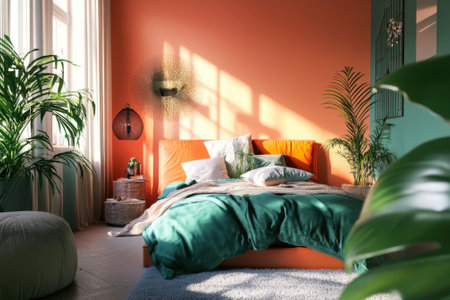1. Introduction: The Growth of Tier 2 Cities
India’s urban landscape is witnessing a significant transformation, with Tier 2 cities such as Indore, Kochi, Lucknow, and Coimbatore emerging as new engines of growth. Traditionally, metro cities like Mumbai, Delhi, and Bengaluru have been the focal points for interior design trends. However, rapid urbanisation in these smaller cities is changing the narrative. As more people migrate from rural areas or return from metros, aspirations are evolving alongside increasing disposable incomes. Residents of these cities are now demanding modern amenities and stylish living spaces that reflect their lifestyles and ambitions. This shift marks a move away from the metro-centric approach, positioning Tier 2 cities at the heart of India’s evolving interior design landscape. The growing middle class in these regions is not only eager to adopt global trends but also keen on blending them with local cultural elements, creating unique design identities that reflect both tradition and modernity.
Desi Minimalism: Blending Tradition with Modernity
In Tier 2 Indian cities, a unique approach to minimalism is taking root—one that gracefully marries modern design sensibilities with the richness of Indian culture. This emerging trend, often referred to as “Desi Minimalism,” is all about creating spaces that are uncluttered yet soulful, reflecting both contemporary lifestyles and deep-rooted traditions.
The Balancing Act: Modern Meets Heritage
Homeowners in cities like Coimbatore, Lucknow, and Surat are increasingly opting for interiors that showcase clean lines and open layouts while staying true to their cultural roots. Rather than adopting a stark or impersonal look, they weave in elements such as handwoven textiles, carved woodwork, and traditional artefacts to add warmth and character to their homes.
Infusing Local Crafts and Materials
One hallmark of Desi Minimalism is the celebration of local craftsmanship. Artisans from the region contribute to interiors through:
| Craft | Description | Common Usage |
|---|---|---|
| Block Printing | Hand-printed fabrics featuring ethnic motifs | Cushion covers, curtains, bed linen |
| Terracotta | Earthy pottery and decorative items | Lamps, planters, wall accents |
| Bamboo & Cane Work | Sustainable furniture and accessories | Chairs, baskets, pendant lights |
| Wood Carving | Intricate wooden panels and doors | Pooja rooms, partitions, headboards |
Palette: Earthy Tones & Organic Materials
The colour schemes lean towards warm neutrals—think ochre yellows, terracotta reds, and muted greens—which evoke a sense of calm while connecting with nature. Sustainable materials like jute rugs, khadi upholstery, reclaimed wood, and stone flooring are preferred choices that not only look elegant but also support eco-friendly living.
Sustainable Choices for Everyday Living
This conscious blend of tradition and modernity extends beyond aesthetics. Many homeowners are investing in solar panels, rainwater harvesting systems, energy-efficient lighting, and upcycled décor pieces—demonstrating how sustainability can be seamlessly woven into daily life without compromising on style or comfort.
Desi Minimalism in Tier 2 Indian cities is more than just a design trend; it’s an evolving lifestyle choice where every element tells a story—of heritage cherished and a future embraced.

3. Rise of Smart and Functional Spaces
As Tier 2 Indian cities like Jaipur, Coimbatore, and Indore experience rapid urbanisation, there is a visible shift towards smart and functional interior design. Homeowners are increasingly adopting smart home devices such as automated lighting, security systems, and voice-controlled appliances. These not only enhance daily convenience but also cater to the tech-savvy youth and working professionals seeking efficiency in their routines.
Innovative Storage Solutions for Urban Living
With apartments becoming more compact, innovative storage solutions have become essential. Designers are incorporating modular wardrobes, hidden cabinets, and under-bed drawers to maximise every inch of space. These practical ideas reflect the Indian mindset of maintaining neatness and orderliness despite limited square footage.
Vastu Compliance Remains Important
Even as technology becomes prevalent, traditional values like Vastu Shastra continue to influence interior choices. Many homeowners in Tier 2 cities consult Vastu experts to ensure harmony and positive energy flow within their homes. This results in strategic placements of furniture, entryways, and decor elements—seamlessly blending modernity with cultural beliefs.
Multi-Utility Furniture: The New Essential
The demand for multi-utility furniture is on the rise as residents look for ways to optimise their living spaces. Foldable dining tables, sofa-cum-beds, and convertible workstations are now standard in many city apartments. These versatile pieces not only save space but also support the flexible lifestyle that urban Indians increasingly prefer.
The convergence of smart technology, clever storage, Vastu compliance, and adaptable furniture is redefining how Tier 2 city dwellers approach home interiors—creating a unique blend of comfort, tradition, and innovation tailored for India’s evolving urban landscape.
4. Eco-Conscious Decor Choices
As Tier 2 Indian cities rapidly embrace modern living, there is a growing preference for eco-conscious decor choices that resonate with traditional Indian values of sustainability and harmony with nature. Homeowners are increasingly opting for environmentally friendly paints, upcycled furniture, natural lighting solutions, indoor plants, and locally sourced materials to create spaces that are both stylish and sustainable.
Preference for Sustainable Materials
The focus on local craftsmanship and indigenous materials not only supports the regional economy but also reduces carbon footprint associated with long-distance transport. Residents in cities like Coimbatore, Jaipur, and Lucknow are gravitating towards bamboo, reclaimed wood, jute, and terracotta for their interiors.
Eco-Friendly Interior Elements
| Element | Description | Popular Usage in Tier 2 Cities |
|---|---|---|
| Eco-friendly Paints | Low VOC paints that are safe for health and the environment | Accent walls, kids’ rooms, kitchens |
| Upcycled Furniture | Furniture made from repurposed wood or metal | Sofas, coffee tables, bookshelves |
| Natural Lighting | Maximising daylight through large windows & skylights | Living rooms, dining areas |
| Indoor Plants | Potted greens and vertical gardens for air purification | Balconies, entryways, workspaces |
| Locally Sourced Materials | Materials sourced within the region to support artisans | Flooring, wall cladding, decor accents |
Cultural Roots of Sustainability
This shift towards eco-friendly interiors aligns with Indian traditions like “waste not, want not” (kabaad se jugaad), reflecting an age-old wisdom to reuse resources creatively. Whether it’s reusing grandmother’s old trunk as a center table or introducing neem wood shelves for their natural anti-bacterial properties, these choices blend utility with nostalgia.
By prioritising sustainable decor elements, homeowners in Tier 2 Indian cities are setting a new benchmark where contemporary design meets cultural consciousness—making every home a testament to responsible living.
5. Celebrating Local Artisanship
One of the most heartening emerging trends in interior design across Tier 2 Indian cities is the revival and celebration of local artisanship. As urban homeowners seek to infuse authenticity and a sense of rootedness into their spaces, regional crafts are finding pride of place in modern interiors. For instance, the vibrant motifs of Madhubani art from Bihar are being adapted into wall panels and furnishings, adding a splash of culture and storytelling to living rooms and lounges. Similarly, Channapatna toys—once the pride of Karnataka—are now reimagined as quirky décor pieces, lamp stands, and even drawer handles, blending nostalgia with contemporary design sensibilities.
Jaipur blue pottery, known for its intricate floral patterns and cool blue hues, is also making a comeback as tableware, accent tiles, or decorative bowls in urban homes. This resurgence is not just about aesthetics; it’s a conscious movement towards supporting local craftsmen and preserving India’s rich craft heritage. Designers and homeowners alike are increasingly seeking out handcrafted pieces, custom commissions, and collaborative projects that honour the skills passed down through generations.
This renewed appreciation for regional artistry not only gives interiors a truly Indian feel but also contributes directly to the livelihoods of artisans. By integrating elements like Madhubani murals in pooja rooms, Channapatna artefacts in children’s play corners, or Jaipur pottery in kitchens and balconies, Tier 2 city residents create unique spaces that are both stylish and steeped in tradition. The trend reflects an evolving design ethos—one that values stories, sustainability, and a strong connection to one’s roots.
6. Colour Palettes with a Bharatiya Twist
One of the most striking interior design trends in Tier 2 Indian cities is the embrace of colour palettes that are deeply rooted in Bharatiya (Indian) culture. Gone are the days of monotonous beige or plain white walls; today’s homeowners and designers are boldly incorporating vibrant hues inspired by our rich festivals, traditional textiles, and iconic landscapes. This trend not only brings life to living spaces but also pays homage to our diverse heritage.
Indigo: The Shade of Royalty
Indigo has long been associated with India’s ancient dyeing traditions, especially from regions like Rajasthan and Gujarat. Its deep blue tones evoke a sense of calm and elegance while reflecting our artisanal legacy. Walls, accent pieces, or even soft furnishings in indigo are gaining popularity for their ability to blend tradition with modernity.
Marigold: Festive and Joyful
No Indian festival is complete without the burst of marigold flowers. This vibrant yellow-orange shade is now making its way into homes as a symbol of positivity and celebration. Whether it’s through statement furniture, wall art, or decorative accessories, marigold instantly uplifts interiors, creating a warm and inviting atmosphere that resonates with Indian hospitality.
Terracotta: Earthy and Timeless
Inspired by India’s vast landscapes and earthenware traditions, terracotta shades are becoming a favourite for those seeking an earthy, grounded look. From clay tiles to painted feature walls and pottery-inspired décor, this warm hue connects urban dwellers with nature and nostalgia alike.
Peacock Green: Nature’s Inspiration
The majestic peacock—India’s national bird—inspires this rich green-blue tone that adds drama and sophistication to any room. Peacock green works beautifully as an accent colour on doors, cabinetry, or textiles, lending an unmistakable Indian flair while remaining fresh and contemporary.
Blending Tradition with Modern Sensibilities
Tier 2 city homeowners are increasingly blending these bold Bharatiya colours with neutral bases or minimalist furniture to achieve a look that is both rooted in tradition and suitable for modern lifestyles. This approach allows for personal expression while ensuring that spaces remain functional and uncluttered—a perfect reflection of evolving tastes in smaller Indian cities.
7. Conclusion: The Future of Interior Design in Tier 2 Cities
As we look at the emerging interior design trends shaping tier 2 Indian cities, it’s clear that these urban spaces are setting a new benchmark for creative expression and practical solutions. The fusion of traditional Indian aesthetics with contemporary global influences is giving rise to homes that are not only visually appealing but also deeply rooted in local identity. From the embrace of eco-friendly materials and smart home technology to the celebration of regional handicrafts and multi-functional spaces, tier 2 cities are crafting a distinctive narrative for modern Indian living. Going forward, we can expect these cities to continue driving innovation by blending sustainability with cultural authenticity, making interior design accessible and aspirational for a broader population. As young professionals and families seek comfort, style, and connection to their roots, tier 2 Indian cities will remain a fertile ground for unique design stories—ones that balance modernity with timeless Indian values. This journey will no doubt inspire designers across the country to draw from local wisdom while embracing global trends, ensuring that India’s interior design identity stays vibrant, inclusive, and uniquely her own.

